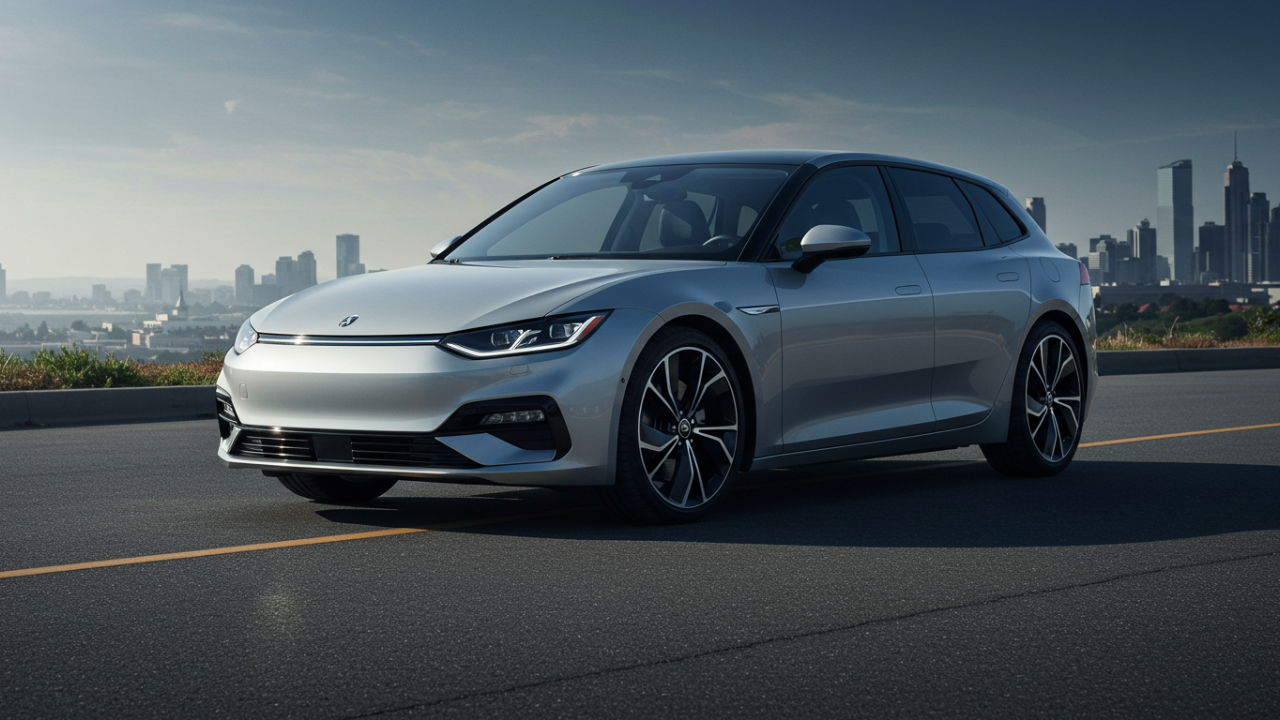In a world racing toward sustainability, electric vehicles (EVs) have shifted from niche curiosities to everyday necessities. As of October 2025, global EV sales have surged past 20 million units annually, driven by plummeting battery costs, government incentives, and a collective push to combat climate change. But with so many options flooding the market—from compact city commuters to luxury SUVs—navigating the EV landscape can feel overwhelming. This guide cuts through the hype, offering a no-nonsense, actionable roadmap for anyone considering making the switch. Whether you’re a first-time buyer eyeing affordability or a seasoned driver optimizing for performance, we’ll cover the essentials: from core mechanics to real-world ownership tips. By the end, you’ll have the insights to make an informed decision that aligns with your lifestyle, budget, and values. Let’s charge ahead.
Understanding the Basics of Electric Vehicles
Before diving into models or incentives, it’s crucial to grasp what makes an EV tick. Unlike traditional gas guzzlers, EVs rely on electricity stored in batteries to power electric motors, eliminating the need for fossil fuels entirely.
What Exactly Is an Electric Vehicle?
At its heart, an EV is a vehicle propelled by one or more electric motors, drawing energy from rechargeable battery packs—typically lithium-ion for their efficiency and longevity. These batteries can store enough juice for 200 to 500 miles per charge, depending on the model and driving conditions. Charging happens via plugs connected to the grid, much like your phone, but on a grander scale. No oil changes, no exhaust fumes—just smooth, instant torque that makes acceleration feel like a gentle launch from a catapult.
For newcomers, think of it this way: EVs convert about 77% of electrical energy from the grid into power at the wheels, compared to internal combustion engines’ measly 12-30%. This efficiency translates to fewer trips to the pump (or charger) and lower operating costs. But EVs aren’t perfect; range anxiety—the fear of running out of juice mid-trip—lingers for some, though expanding infrastructure is easing that worry.

Types of Electric Vehicles: Plug-In Hybrids, BEVs, and More
Not all EVs are created equal. The market segments into battery electric vehicles (BEVs), which run solely on batteries; plug-in hybrid electric vehicles (PHEVs), blending electric and gas power; and extended-range EVs, which use a small gas generator to extend battery life.
- BEVs: Pure electrics like the Tesla Model 3 or Rivian R1T. Ideal for full commitment to zero emissions.
- PHEVs: Think Toyota Prius Prime—electric for short commutes (20-50 miles), gas for longer hauls.
- Extended-Range EVs: Less common, like the Mazda MX-30 R-EV, where a tiny engine recharges the battery on the go.
In 2025, BEVs dominate with 65% market share, thanks to advancements in solid-state batteries promising faster charging and longer life. Choose based on your daily mileage: under 50 miles? PHEV suffices. Road trips? Go BEV with 300+ mile range.
The Tangible Benefits of Going Electric
Switching to an EV isn’t just trendy—it’s a smart move backed by data. From wallet savings to planetary perks, the upsides are stacking up.
Environmental Advantages: A Greener Ride
EVs are climate warriors. Tailpipe emissions? Zero. Over their lifecycle, EVs produce 50-70% fewer greenhouse gases than gas cars, per the International Energy Agency’s 2025 report. Even accounting for battery production (which is energy-intensive), the breakeven point hits within 1-2 years of driving.
Actionable tip: Opt for EVs charged via renewable sources like solar panels. In regions with clean grids (e.g., California’s hydro-heavy mix), your carbon footprint shrinks to a whisper. Pair this with regenerative braking—which recaptures energy during stops—and you’re maximizing eco-impact. For families, this means cleaner air for kids’ lungs; studies link EV adoption to 20% drops in urban particulate matter.
Economic Perks: Savings That Add Up
Forget the “EVs are expensive” myth. Upfront costs have dipped below $30,000 for base models, thanks to U.S. federal tax credits up to $7,500 under the Inflation Reduction Act (still valid in 2025). Operating costs? A steal at $0.04 per mile versus $0.15 for gas.
Break it down: Annual fuel savings average $1,500 for a 12,000-mile driver. Maintenance skips oil and transmissions, slashing bills by 40%. Resale values hold strong—Teslas retain 70% after three years. Pro tip: Use apps like PlugShare to find free charging spots, turning errands into savings opportunities. For businesses, fleet EVs qualify for accelerated depreciation, boosting ROI.
Choosing the Right EV for Your Needs
With over 100 models available in 2025, selection demands strategy. Start with self-assessment.
Key Factors to Consider
Assess your life: Commute distance, family size, budget, and charging access. Range needs? Aim for 250+ miles for versatility. Budget under $40,000? Look at the Chevy Bolt EUV or Nissan Leaf. Tech lovers? Prioritize over-the-air updates and ADAS (advanced driver-assistance systems) like adaptive cruise.
Safety ratings from NHTSA or Euro NCAP are non-negotiable—most EVs score 5-stars due to low centers of gravity reducing rollover risks. Test drive for ride quality; some, like the Hyundai Ioniq 5, offer airy cabins with sliding consoles for practicality.
Budget hack: Lease for 36 months to snag low payments ($200-300/month) and dodge battery degradation worries—warranties cover 8 years/100,000 miles anyway.
Top EV Models to Watch in 2025
Here’s a curated shortlist, based on performance, value, and innovation:
- Budget Pick: Chevrolet Equinox EV ($35,000 start). 319-mile range, spacious SUV vibe, and GM’s Ultium platform for zippy handling.
- Family Hauler: Kia EV9 ($55,000). Three rows, 304 miles, and vehicle-to-load power for camping—charge your devices off the battery.
- Performance Beast: Porsche Taycan ($90,000+). 0-60 in 2.4 seconds, but with everyday usability via 800V fast-charging.
- Luxury Daily Driver: Lucid Air ($70,000). 516-mile range, the longest in class, plus serene quietude.
Compare via tools like Edmunds’ configurator, factoring in local incentives. Remember, software matters—Ford’s BlueCruise offers hands-free highway driving, a game-changer for long hauls.
Navigating Charging and Infrastructure
No EV guide skips the plug. In 2025, the U.S. boasts 200,000+ public chargers, up 50% from 2023, thanks to Biden’s infrastructure bill.
Setting Up Home Charging
Home is where the heart (and charger) is. Level 1 (standard outlet) suffices for overnight top-ups but takes 20+ hours for a full charge. Upgrade to Level 2 (240V, $500-1,000 installed) for 20-30 miles per hour gained—perfect for daily routines.
DIY steps: Check your electrical panel for capacity (add a 50-amp circuit if needed). Brands like ChargePoint offer app-controlled units with energy monitoring. Cost? $0.10-0.20/kWh at home, versus $0.50 at stations. Solar integration? Pair with panels for near-free charging.
Public and Fast-Charging Networks
Road trips demand DC fast chargers (Level 3), adding 200 miles in 20 minutes. Electrify America and Tesla Superchargers lead, with NACS (North American Charging Standard) unifying plugs—bye-bye adapters.
Strategy: Plan via ABRP (A Better Routeplanner) app, inputting weather and load for accurate ETAs. Urban dwellers, scout workplace perks; many offices now subsidize. Global travelers: Europe’s IONITY network rivals U.S. density.
Maintenance, Costs, and Long-Term Ownership
EVs simplify upkeep but introduce battery nuances.
Routine checks: Tires (rotate every 6,000 miles), brakes (last longer due to regen), and cabin filters. Annual costs? $300-500, half of gas cars.
Battery health: Expect 80% capacity after 200,000 miles. Monitor via apps; avoid full discharges. Warranty covers it, but for peace, buy from dealers offering extended plans.
Total ownership: Over 10 years, an EV saves $10,000+ net, per Consumer Reports. Insurance averages 10% higher due to repair costs, but shop around—Geico offers EV discounts.
Emerging Trends Shaping the EV Future
By 2030, EVs could claim 60% of sales. Solid-state batteries promise 600-mile ranges and 10-minute charges. Autonomy advances: Waymo’s robotaxis expand, blurring personal vs. shared lines.
Affordability surges with Chinese imports like BYD’s $20,000 Seagull hitting U.S. shores. V2G (vehicle-to-grid) lets your EV power your home during outages—practical in storm-prone areas.
Stay ahead: Follow IRENA reports for policy shifts; tariffs on imports could sway prices.
FAQ
How long does it take to charge an EV at home?
With a Level 2 charger, expect 4-10 hours for a full charge, depending on battery size. Level 1 takes 20-40 hours—fine for overnight but not ideal for daily use.
Are EVs really cheaper to own long-term?
Yes, with fuel savings of $1,000-2,000 annually and halved maintenance, most owners break even in 3-5 years, even after higher upfront costs.
What if I live in an apartment without a garage?
Many complexes now install shared chargers. Check local rebates, or use public stations. Apps like ChargeHub map nearby options within walking distance.
Do EVs perform well in cold weather?
Range drops 20-30% in sub-zero temps due to battery chemistry and heating demands. Preheat via app while plugged in to mitigate this.
Can I tow with an EV?
Absolutely—models like the Ford F-150 Lightning handle 10,000 lbs. Just factor in 30-50% range loss when loaded.



